This is part III of our three part post, Battle for the Back Woods, discussing many of the non native invasive plant species that are impacting the natural systems of the Back Woods. Part I discussed non native and invasive vines, part II took a look at a few non native shrub, herb, and grass species, and now part III addresses the few non native invasive trees that threaten the canopy of the Back Woods. In these posts you will see reference to Category I and Category II invasive species. These designations are defined as follows by the Florida Exotic Pest Plant Council (FLEPPC).
Invasive exotic plants are termed Category I invasives when they are altering native plant communities by displacing native species, changing community structures or ecological functions, or hybridizing with natives. This definition does not rely on the economic severity or geographic range of the problem, but on the documented ecological damage caused. Category II invasive exotics have increased in abundance or frequency but have not yet altered Florida plant communities to the extent shown by Category I species. These species may become Category I if ecological damage is demonstrated.
Fortunately, non native invasive tree species inhabit a only few sparse pockets in the Back Woods. They have been the least of our invasives concern and so far have been fairly easily controlled with herbicide and a chainsaw (smile). But many of these tree species are considered serious invaders of natural areas in Florida.
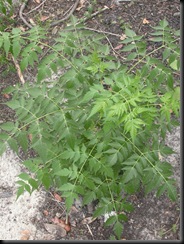 Chinaberry (Melia azedarach) It is amazingly fast growing in my opinion, growing from a seedling to bushy sapling in a short amount of weeks. This tree is easily identified from its doubly or more compound leaves. Water is a known carrier of the seeds and we still find new seedlings along the high water lines of the sinkholes near where we have treated or removed mature trees. Birds are known to distribute the seeds as saplings have been noted in our sandhills as well. The fruit of his Category II invasive species is poisonous to mammals. I was thoroughly delighted to have successfully killed a 40 foot tree with chainsaw girdling and one application of 100% solution of 41% glyphosate. If not readily reintroduced by birds this species may be eliminated in the Back Woods in the future.
Chinaberry (Melia azedarach) It is amazingly fast growing in my opinion, growing from a seedling to bushy sapling in a short amount of weeks. This tree is easily identified from its doubly or more compound leaves. Water is a known carrier of the seeds and we still find new seedlings along the high water lines of the sinkholes near where we have treated or removed mature trees. Birds are known to distribute the seeds as saplings have been noted in our sandhills as well. The fruit of his Category II invasive species is poisonous to mammals. I was thoroughly delighted to have successfully killed a 40 foot tree with chainsaw girdling and one application of 100% solution of 41% glyphosate. If not readily reintroduced by birds this species may be eliminated in the Back Woods in the future.
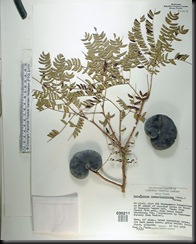 Earpod tree (Enterolobium contortisiliquum) was once listed as a Category II non native invasive species in 1999. Sometime between 1999 and 2001 it was reevaluated and removed from the list. There are at least three of these trees on site only one of which has been successfully killed by girdling with a chainsaw and herbiciding. These trees produce hundreds of seed pods holding thousands of seeds. There is the potential in our small area for this tree to become a localized problem and we are keeping an eye on the seed bank around the treated trees. So far, no new seedlings have been detected away from the existing trees.
Earpod tree (Enterolobium contortisiliquum) was once listed as a Category II non native invasive species in 1999. Sometime between 1999 and 2001 it was reevaluated and removed from the list. There are at least three of these trees on site only one of which has been successfully killed by girdling with a chainsaw and herbiciding. These trees produce hundreds of seed pods holding thousands of seeds. There is the potential in our small area for this tree to become a localized problem and we are keeping an eye on the seed bank around the treated trees. So far, no new seedlings have been detected away from the existing trees.
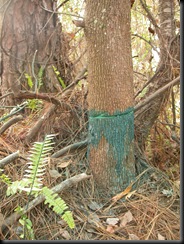 Camphor tree (Cinnamomum camphora ) can be a beautiful spreading shade tree but is still a category I invasive species. Because of its stature and the many grand mature specimens in our area, this plant is considered an important component of the urban forest canopy. There are actually restrictions on removing specimens larger than 5” in DBH within the limits of the City of Tampa. Aesthetically pleasing or not, this tree is a serious nuisance. Very persistent and resistant to herbicide, many of the trees we have girdled and treated have survived. Camphor trees can be readily identified by the strong camphor like scent the leaves produce when crushed. Animals are known to spread the copious fruit the camphor produces which may lead to the potential of reintroduction of these species once eliminated.
Camphor tree (Cinnamomum camphora ) can be a beautiful spreading shade tree but is still a category I invasive species. Because of its stature and the many grand mature specimens in our area, this plant is considered an important component of the urban forest canopy. There are actually restrictions on removing specimens larger than 5” in DBH within the limits of the City of Tampa. Aesthetically pleasing or not, this tree is a serious nuisance. Very persistent and resistant to herbicide, many of the trees we have girdled and treated have survived. Camphor trees can be readily identified by the strong camphor like scent the leaves produce when crushed. Animals are known to spread the copious fruit the camphor produces which may lead to the potential of reintroduction of these species once eliminated.
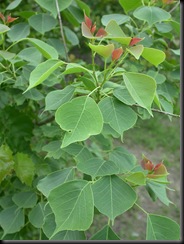 Chinese tallowtree (Triadica sebifera syn. Sapium sebiferum) was introduced to the U.S. in the 1700’s as an ornamental and for seed oil. Now this Category I invasive species can be found throughout much of Florida and the Southeast United States. Many people are familiar with this plant as the “popcorn tree” named for the white wax covered fruit resembling popcorn. Each tree has the potential to produce fruit in the hundreds with seeds in the thousands that are unfortunately very attractive to wildlife and birds. Notably the fruit is toxic to cattle and rough on humans as well. Reintroduction from outside sources may always be of concern in the Back Woods.
Chinese tallowtree (Triadica sebifera syn. Sapium sebiferum) was introduced to the U.S. in the 1700’s as an ornamental and for seed oil. Now this Category I invasive species can be found throughout much of Florida and the Southeast United States. Many people are familiar with this plant as the “popcorn tree” named for the white wax covered fruit resembling popcorn. Each tree has the potential to produce fruit in the hundreds with seeds in the thousands that are unfortunately very attractive to wildlife and birds. Notably the fruit is toxic to cattle and rough on humans as well. Reintroduction from outside sources may always be of concern in the Back Woods.
And so concludes our three part look at some of the nuisance plant species impacting the vegetative communities of the Back Woods. I hope you found it of interest and feel inspired to learn more about some of these species on your own. Just make sure to share your new found knowledge with others and help spread the message about the impacts of non native invasive plant species and what we can do to aid in their removal and prevent their spread!
Look for a new post on non native and invasive animal species in the Back Woods, coming soon! In the meantime, check out the Invader Updater at the UF Wildlife-Johnson Lab at the UF Dept. of Wildlife Ecology and Conservation for all kinds of cool information and links on animal invasive species!
Some of the common names I use may seem unfamiliar or appear to be a variation of a more familiar common name for the plants discussed. I try to use the common names as well as the currently listed scientific name as listed on the Atlas of Florida Vascular Plants as a convention to keep our naming and references consistent in this blog.
*note correction: in the original post we incorrectly posted a picture of chinaberry with a description of a flamegold tree...we were supposed to be writing about the chinaberry all along...pardon the error
 WE WANT YOU: If you are looking for a great work out (pulling up plants and wielding loppers) we are always looking for intrepid VOLUNTEERS to help us out in our battle against invasives. Current opportunities M-F 7am-4pm.
WE WANT YOU: If you are looking for a great work out (pulling up plants and wielding loppers) we are always looking for intrepid VOLUNTEERS to help us out in our battle against invasives. Current opportunities M-F 7am-4pm.
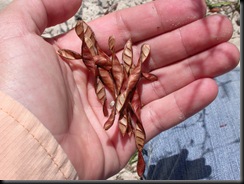 Explosive dehiscence in the sandhill…thoroughly dry seedpods of the partridge pea (Chamaecrista fasiculata) violently split open spraying their seeds many feet, even yards, from the mother plant. More subtle than popping corn but noticeable none the less, it can really be quite disconcerting when there is this snap crackle pop all around you without knowing where it is coming from…the only clue being the twisted remains of the seedpods lying like spent shell casings beneath the plants. :D
Explosive dehiscence in the sandhill…thoroughly dry seedpods of the partridge pea (Chamaecrista fasiculata) violently split open spraying their seeds many feet, even yards, from the mother plant. More subtle than popping corn but noticeable none the less, it can really be quite disconcerting when there is this snap crackle pop all around you without knowing where it is coming from…the only clue being the twisted remains of the seedpods lying like spent shell casings beneath the plants. :D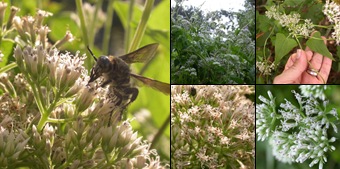
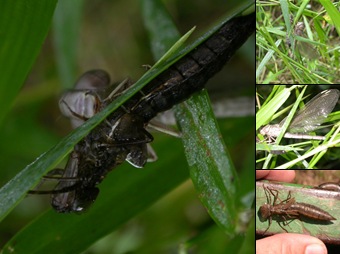
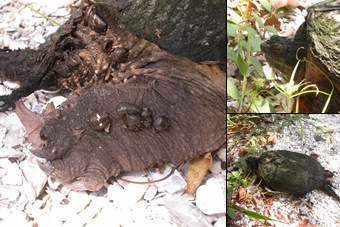

 Earpod tree
Earpod tree Camphor tree
Camphor tree
